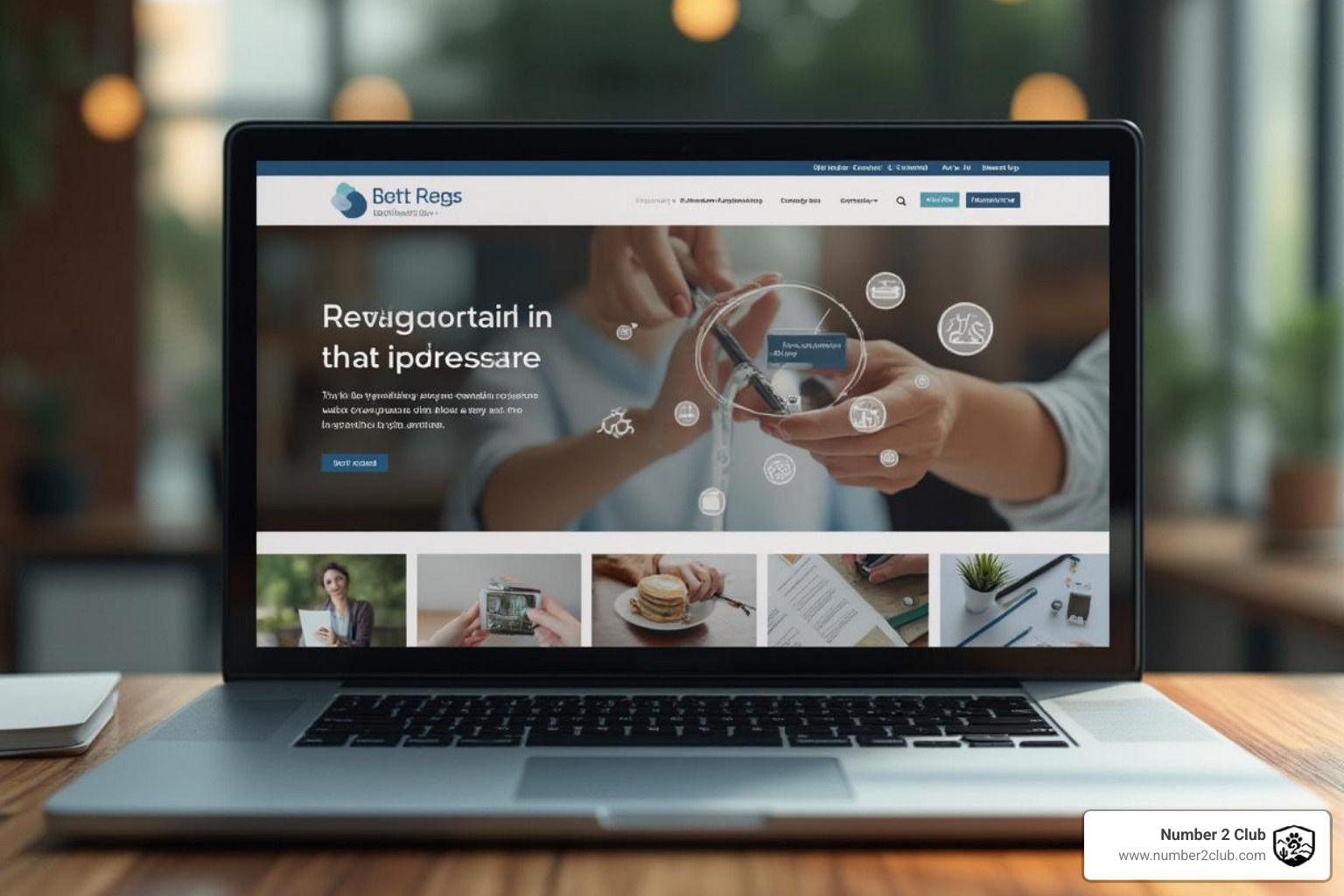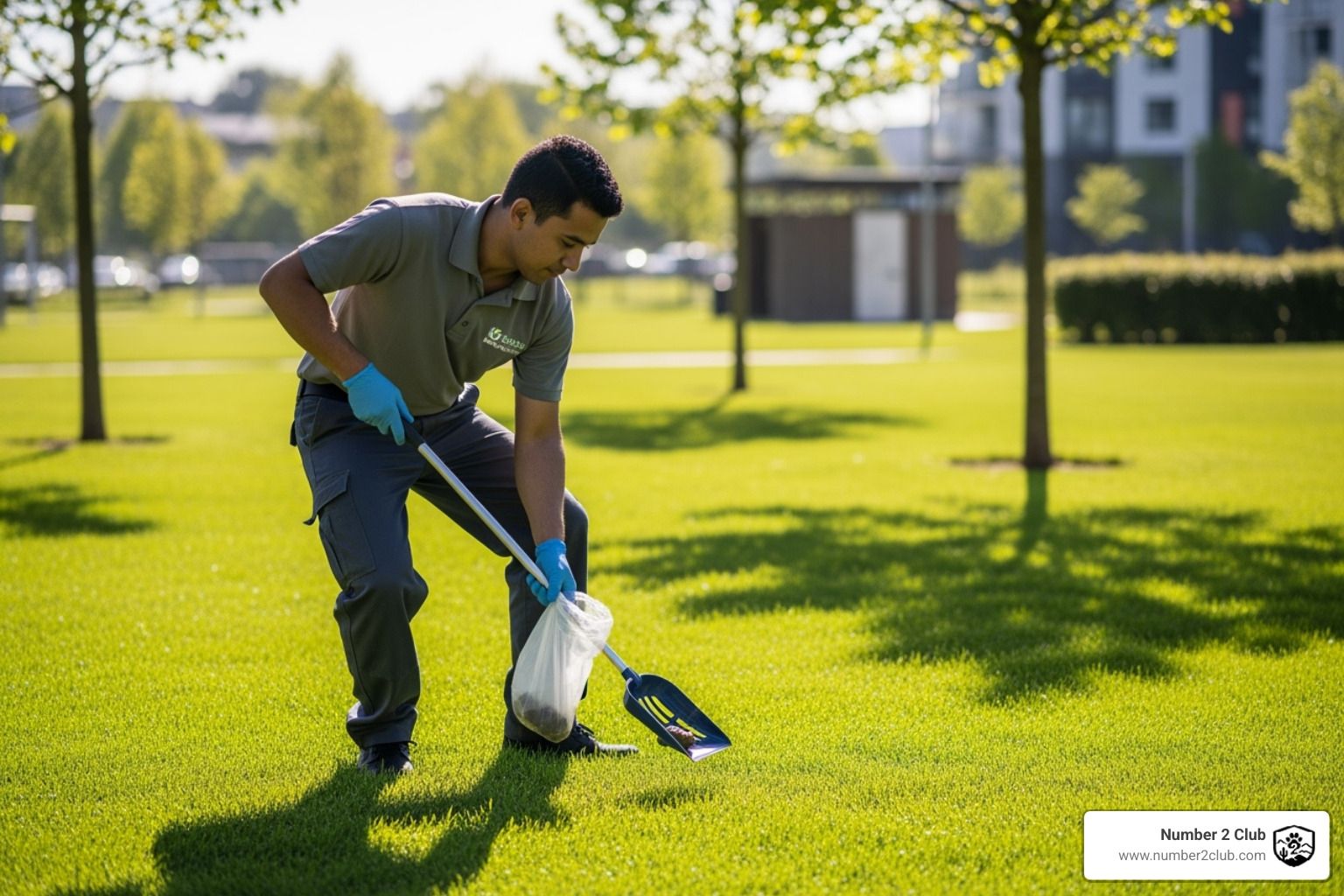Photography Websites That'll Make Your Business Click
The Power of Professional Website Photography for Businesses

In today's crowded online world, website photography for businesses is more than just pretty pictures; it's a vital tool for attracting and converting your ideal customers.
Professional photography is essential for your business because it:
- Establishes Trust & Credibility
- Acts as a 24/7 Online Showroom
- Attracts New Clients
- Improves Brand Identity
- Boosts Conversions
- Streamlines Operations
As one professional shared, "First impressions are vital in our industry, that is why the customer’s interest in the property needs to be captured during the very first glance." Your website photos are often that first glance, telling your story before any text does. This guide will show you how to leverage your visuals to make your business click.

Why a Professional Photography Website is Your #1 Marketing Tool
Your website is your ultimate marketing tool, working for you around the clock. It acts as a 24/7 storefront, showcasing your work, attracting new clients, and making your brand recognizable. It's also the foundation of your organic marketing, helping people find you through search engines.
A strong online presence helps you stand out in a busy market by showcasing your unique style and process. You can educate potential clients on why you're the perfect fit for them. For example, couples spend around $2,900 on average for wedding photography, according to The Knot's research. For such a significant investment, clients want to see professionalism and trustworthiness, which begins on your website.
Establishing Credibility and Trust
For website photography for businesses, first impressions are everything. A well-designed, professional website instantly signals that you are legitimate and skilled, building client confidence from the moment they arrive. Beyond visuals, a credible site includes social proof like client testimonials, awards, or media features. Consistent branding across all pages is also crucial for creating a compelling narrative. As Simon Sinek suggests, "Start with Why." Your website is the perfect platform to share your "why," connecting with clients on a deeper level to build lasting trust.
Owning Your Platform vs. Social Media
While social media is great for outreach, you don't own your presence there. Algorithms change, features disappear, and your visibility is subject to the platform's rules. It's like building a house on rented land.
Your website, however, is your own digital property. You have total control over its design, functionality, and content, free from unpredictable algorithms. This allows your brand identity to shine through exactly as you intend. It also facilitates direct communication with clients and lets you build your own email list. Your website is a stable, long-term asset that grows with your business. As one expert puts it, "Your website is the only platform you have total control over."
Ready to learn how to bring more visitors to your own website? We've got some great tips for you in our guide: Tips for Increasing Site Traffic.
The Anatomy of a Client-Winning Photography Website
An effective photography website is more than a digital gallery; it's a carefully crafted experience designed to attract, inform, and convert visitors into clients. Think of it as your best salesperson, working 24/7.

For website photography for businesses, quality is key. Your images must be high-resolution yet load quickly. Your site needs intuitive navigation, clear calls-to-action on every page, and consistent branding. Crucially, it must be mobile-responsive, as most users browse on their phones.
Essential Content for Website Photography for Businesses
To connect with clients, you need smart content that answers their questions and builds trust.
- Curated Portfolio: Showcase only your absolute best work. Think of it as a highlight reel, not an archive. Organize work into Galleries by Niche(e.g., products, headshots, real estate) so visitors can easily find what's relevant to them.
- About Page: This is about how you help your clients. Share your passion and what makes your approach special to build a personal connection.
- Your Process: Clearly explain your workflow from first contact to final delivery. This transparency builds trust.
- Contact Information: Make it incredibly easy for people to reach you with a dedicated page including a simple Contact Form.
- Blog: A blog is a powerful SEO tool. Share insights and behind-the-scenes content to position yourself as an expert and keep your site fresh.
- Pricing and Packages: While not for everyone, displaying clear package options can help qualify leads and manage client expectations from the start.
- Client Testimonials: Authentic reviews from happy clients are incredibly persuasive. We've seen testimonials boost confidence for clients from Litchfield Park, AZ to Buckeye, AZ.
- FAQs: Answering common questions saves time for both you and your visitors and builds their confidence in your professionalism.
Key Features to Showcase Your Work and Attract Clients
Beyond static content, dynamic features can improve your website photography for businesses.
- High-Quality Image Galleries: Use features like Lightbox Displays for an immersive viewing experience, allowing users to see full-resolution images easily.
- Video Integration: Add a dynamic layer with behind-the-scenes footage, video testimonials, or animated GIFs.
- Client Proofing Galleries: A game-changer for photographers. Allow clients to privately view, select, and order prints from their own password-protected galleries.
- Online Booking Forms: Let clients schedule consultations or book sessions directly on your site, automating a key part of your workflow.
- Clear Service Descriptions: Don't just show your work; explain what each service includes so clients know exactly what to expect.
For an example of how a robust client management system can boost professionalism, explore success stories from photographers who have automated their workflow.
Inspiring Examples of Website Photography for Businesses
The magic of website photography for businesses is its ability to tell a story without words, showcasing your unique offerings, whether they are products or services.

The right visuals can highlight everything from product details to the vibe of an event. Product photography is essential for e-commerce, while lifestyle photography shows products in real-world situations. For people-focused businesses, corporate headshots create professional, approachable images of your team, and architectural photography captures the design of spaces. Food photography makes dishes look irresistible, and event photography freezes unforgettable moments.
For inspiration, explore these excellent photography websites:
Product & E-commerce Photography
If you sell physical products, your website photography is your virtual showroom. Start with clean backgrounds to make your product the star. Use lifestyle context shots to help customers imagine using the product, and include detail shots to highlight quality and unique features. For an extra wow factor, consider 360-degree views or animated GIFs. As an example, see how This GIF shows an Olay product in action. Also, showing scale helps customers visualize a product's size. Strong marketing visuals are essential for selling products online.
Service-Based & Corporate Photography
For service-based businesses, photography should showcase your people, process, and environment to build a human connection.

Professional team headshots humanize your business and build trust. Showing your team in their office environment, perhaps in Litchfield Park, AZ, or Goodyear, AZ, adds a personal touch. Behind-the-scenes shots or photos of your team collaborating convey expertise. Images of positive client interactions(with permission) can beautifully illustrate your customer-centric approach. These visuals help potential clients feel a rapport with the people behind the service before they even make contact.
Building Your Site: Platforms, Tools, and SEO
Now that you understand the power of website photography for businesses, let's cover how to build your digital home. This involves choosing the right website builder, securing a domain name and hosting, and ensuring it's secure with an SSL certificate.
Beyond the technical setup, you need to ensure people can find your site. This is where understanding SEO keywords and creating a great user experience (UX) is critical. Your site should be easy to steer and a joy to explore. For those building their site, a good page builder can simplify content creation. Check out our guide on the Easiest WordPress Page Builder to get started.
Comparing Website Builder Platforms
Choosing the right platform is crucial. Options range from highly intuitive drag-and-drop builders that offer pixel-perfect design, to template-based systems that provide ease of use with moderate customization. There are also highly flexible open-source solutions that offer extensive customization through plugins and themes, though they may have a steeper learning curve. Additionally, specialized platforms cater specifically to photographers, often including built-in tools for client galleries, print sales, and customer relationship management.
These platforms vary significantly in ease of use, customization capabilities, annual cost, SEO features, and scalability. While some template-based platforms are sometimes criticized for their pricing, their ease of use, bundled features, and support can offer significant value for many professionals. Open-source solutions offer the best flexibility but typically require more technical skill. For photographers, specialized platforms are excellent choices, as they often include built-in tools for client management and print sales.
Note: Costs are estimates and can vary based on the plan and add-ons.
SEO Best Practices for Website Photography for Businesses
Great SEO ensures your stunning website photography for businesses gets found by the right people. It's about helping search engines understand your content.
- Keyword Research: Identify the phrases your ideal clients use in searches, such as "commercial photographer Litchfield Park, AZ" or "corporate headshots Buckeye, AZ." Weave these terms naturally into your content.
- On-Page SEO: Optimize page titles, meta descriptions, and headings (H1, H2) with your target keywords.
- Image Optimization: This is crucial for photography sites.
- Alt Text: Write descriptive alt text for each image (e.g.,
product photography of a silver watch on a white background) for search engines and accessibility. - File Names: Use descriptive, keyword-rich file names (e.g.,
commercial-product-photography-phoenix.jpg). - Compression: Compress images to reduce file size without sacrificing quality. Faster sites rank better and provide a better user experience.
- Alt Text: Write descriptive alt text for each image (e.g.,
- Local SEO: If you serve a specific area like Verrado, AZ, ensure your name, address, and phone number (NAP) are consistent online. Claim and optimize your Google Business Profile to appear in local map results.
- Blogging for SEO: Regularly publishing high-quality blog posts signals to search engines that your site is an active, authoritative resource.
- Backlink Strategy: Earn links from other reputable websites to build your site's authority.
As one expert noted, "Good SEO and solid website practices have been huge for bringing in new clients and converting them." If you need help, consider consulting with a qualified SEO professional or agency.
Common (and Costly) Website Mistakes to Avoid
Even with the best intentions, it's easy to fall into common website pitfalls that can deter potential clients. Avoiding these mistakes is as important as implementing best practices.

A stunning portfolio can be hampered by technical issues like slow load times, a poor mobile experience, unclear navigation, or inconsistent branding. These seemingly small oversights can lead to lost opportunities.
Design and Content Pitfalls
Here are some common design and content errors to avoid with website photography for businesses:
- Photos only, no text: Text provides context, tells your story, and is crucial for SEO. Don't just show; also tell.
- Not mentioning your location: Specify your base location (e.g., "Serving Litchfield Park, AZ") to build trust and help local SEO.
- A shallow portfolio: Show curated galleries to give a full picture of your work in different niches.
- Broken links: Regularly check your site to ensure all links work, as broken links hurt credibility.
- A self-centered 'About' page: Focus on how you help clients, not just your life story. The goal is to gain trust.
- Waiting for perfection: An imperfect, live website is better than a perfect one that never launches. Get online and iterate.
If you need help crafting compelling website content, consider collaborating with a professional copywriter to refine your messaging.
Technical and SEO Oversights
Technical missteps can significantly harm your site's performance and visibility:
- Ignoring image compression: Large images slow down your site, hurting user experience and SEO.
- Forgetting alt text: Alt text is vital for SEO and accessibility. Describe every image.
- No SSL certificate: An SSL certificate secures your site (HTTPS), which is a Google ranking factor.
- Choosing the wrong platform: A platform that can't scale with your business can lead to costly migrations later.
- Neglecting analytics: Use tools like Google Analytics to understand user behavior and find opportunities for improvement.
- Not checking for mobile-friendliness: Your site must function perfectly on all devices, especially smartphones.
Beyond the Portfolio: Integrating Business Tools
A powerful website photography for businesses does more than display your work; it can become the command center for your entire operation. Integrating business tools can streamline daily tasks, improve client communication, and free up more time for you to focus on photography.
Imagine an efficient admin assistant working 24/7. That's what the right suite of integrated tools can feel like. Many photographers rely on dedicated CRMs that act as super-efficient admin assistants, handling everything from inquiries to invoicing.
How to Streamline Operations with a CRM
A Client Relationship Management (CRM) system is the heart of a client-focused business. It helps you track every interaction, ensuring no detail is missed.
A CRM lets you set up automated emails for greetings and follow-ups, create secure client portals for contracts and galleries, and use project tracking to monitor job statuses and deadlines. It's also excellent for lead management, guiding potential clients from inquiry to booking. Many modern CRMs also offer electronic contract signing and automated payment reminders, speeding up processes and ensuring you get paid on time. Photography-specific CRMs automate these tasks, letting you focus on your craft instead of paperwork.
Integrating Booking, Invoicing, and Galleries
Seamlessly connecting booking, invoicing, and client galleries directly into your website is a game-changer.
With online booking calendars, clients can see your availability and book sessions directly, reducing back-and-forth emails. Once a service is confirmed, automated invoicing can send bills, and integration with secure payment gateways like Stripe or PayPal allows for quick online payments. For sales, client gallery integration can link private galleries to an online store where clients can purchase prints or downloads. Platforms designed for photographers excel at this. Finally, proofing tools let clients easily select their favorite images, streamlining post-production. These integrations save time and create a professional, efficient client experience.
For further tips on maintaining client relationships, explore our guide on Engaging Site Visitors and Boosting Loyalty.
Frequently Asked Questions about Photography Websites
Here are answers to some of the most common inquiries we receive about website photography for businesses.
How much does a photography website cost?
The cost of a photography website varies. DIY options using platforms like Squarespace, Wix, or Pixieset typically range from $15 to $40 per month($180-$480 annually), plus about $10-$20 per year for a domain name. For a WordPress site, the software is free, but you'll pay for hosting($5-$30/month) and potentially premium themes or plugins ($50+). Hiring a professional designer is a larger investment, typically starting from $1,000 to $10,000+, depending on the project's complexity. Remember to also factor in any e-commerce transaction fees.
How many photos should I put in my portfolio?
Quality always triumphs over quantity. Instead of showing everything, curate a selection of your absolute best work. A good guideline is 20 to 40 images per gallery or niche. This is enough to showcase your range and skill without overwhelming visitors. Be ruthless in your curation, only including images that represent the work you want to attract. It's also important to regularly update your portfolio to keep it fresh and reflective of your current skills.
Can I build a photography website myself?
Absolutely. Modern website builders have made it easier than ever for creatives to build professional websites with no coding experience. Platforms like Squarespace, Wix, and Showit offer intuitive drag-and-drop interfaces and pre-designed templates perfect for showcasing photography. They often include built-in features for galleries, e-commerce, and booking. Building your own site gives you complete control over your brand's online presence, and these platforms provide extensive tutorials and support to help you succeed.
Conclusion
From establishing trust to streamlining your workflow, a professional website is the cornerstone of your success as a photographer. It acts as your tireless digital storefront, marketing engine, and operational hub, all in one.
Your website is where potential clients can browse your stunning work 24/7. It's a powerful tool for attracting your ideal clients through smart SEO and an efficient hub for managing everything from inquiries to payments.
By focusing on a strong portfolio, clear messaging, a user-friendly design, and smart SEO, your website photography for businesses becomes an invaluable asset. It builds trust, highlights your unique style, and helps you connect with the clients you want to work with, providing the essential foundation for growing your brand in today's visual world. For businesses looking to implement these strategies effectively, Number 2 Club can provide expert guidance.











